What happened in Rwanda in 1994 seems almost incomprehensible. In just 100 days, government forces, militias and regular citizens carried out a genocide against the Tutsi social and ethnic minority population. An estimated 800,000 to one million Tutsi were killed, and mass sexual violence was committed against Tutsi women and girls. How could this have happened?
What led to the genocide against the Tutsi in Rwanda?
First-hand accounts from survivors
By Jeremy Maron
Published: June 26, 2019
Tags:
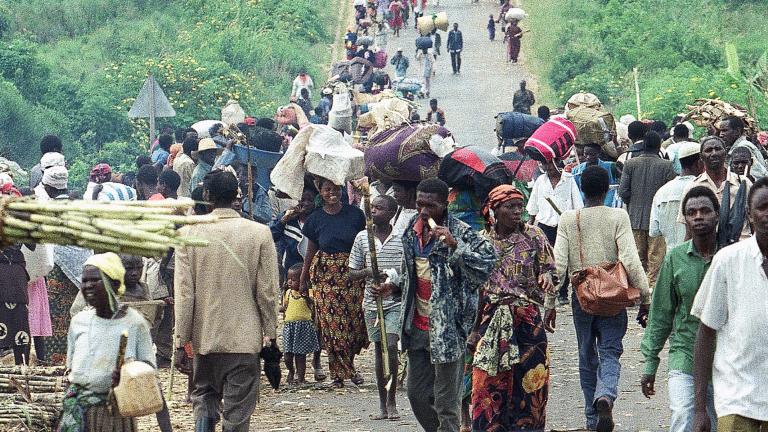
Photo: Associated Press, João Silva
Story text
The genocide was the culmination of decades of division and incitement of hatred towards the Tutsi by extremists in the country’s leadership, which was controlled by members of the Hutu majority group. A deliberate process of positioning the Tutsi as a dangerous and inferior minority group, and even as less than human, set the stage for the genocide that was to come.
Hutu and Tutsi: A colonial legacy of division
Tensions had simmered for decades between the Hutu and Tutsi populations in Rwanda. The region had operated under Belgian colonial rule from after the First World War until 1962. During this time, colonial policies fostered divisions between the Hutu, who made up the country’s largest ethnic group, and the Tutsi, who formed the second‐largest ethnic group. The Belgians viewed the Tutsi minority as superior, and favoured Tutsi for leadership positions. This favoritism created ongoing and deeper tensions between Hutu and Tutsi.
In the late 1950s and early 1960s, struggles for independence from Belgian rule gained strength in Rwanda. These struggles included violence between Hutu and Tutsi as the two groups sought power. A 1959–1962 revolution led to national independence, with Hutu leaders assuming control of government. Many Tutsi were massacred or forced to flee the country as the ruling government portrayed them as threats to Rwanda. The anti‐Tutsi sentiments behind these attacks contributed to the conditions for the genocide that followed 32 years later.
Dr. Jean‐Bosco Iyakaryeme describes his childhood memory of fleeing from his home to avoid attackers. It was the first time he realized he was Tutsi.
Video: Jean-Bosco Iyakaryeme – When I found out I was Tutsi
By the mid‐1960s more than 400,000 Tutsi had fled to neighbouring countries, such as Burundi and Uganda. Although concerted violent attacks against Tutsi began to wane later in the decade, prejudice and suspicion against the minority group remained.
1973 coup d’état leads to anti-Tutsi discrimination
In 1973, a Hutu general named Juvénal Habyarimana seized control of the government. Habyarimana’s government reinforced anti‐Tutsi and pro‐Hutu sentiments. This led to another wave of violence directed at the Tutsi.
Jacques Rwirangira describes the extreme level of discrimination he and his family suddenly faced in the 1970s simply because they were Tutsi.
Video: Jacques Rwirangira – Things have changed
Rwandan Civil War
Throughout the 1980s, Tutsi who had been exiled from Rwanda to surrounding countries began pressing for the right to return to their home country. In 1990, a Tutsi rebel group known as the Rwanda Patriotic Front (RPF) invaded Rwanda. The military responded with force and the conflict developed into civil war. Anti‐Tutsi sentiment began to increase in intensity as Hutu‐dominated media painted the Tutsi minority as a threat to Rwanda.
Bonaventure Kalisa shares his memories of the beginning of the civil war in Rwanda, and how this set the stage for increased suspicion towards the Tutsi.
Video: Bonaventure Kalisa – Careful of your neighbour
Assassination leads to explosion of hostilities
After the civil war in Rwanda had raged for three years, Hutu President Habyarimana and the RPF signed a peace accord to cease the hostilities. Many Hutu extremists were critical of the agreement and continued to incite anti‐Tutsi hatred.
United Nations peacekeepers, including Roméo Dallaire, the Canadian commander of the peacekeeping force, warned that a massacre of Tutsi could be imminent.
Retired Lieutenant‐General Dallaire recalls how Hutu extremists he called “hardliners” manipulated young people into believing that the path to a good future lay with them. After enticing them with food, music and sports, these extremists indoctrinated young people to hate the Tutsi, and prepared them to be active participants in targeting Tutsi when the genocide began.
Video: Roméo Dallaire – An extremist youth movement
On April 6, 1994, a plane carrying President Habyarimana and Burundi’s President Cyprien Ntaryamira, was shot down. Extremist Hutus blamed Tutsi rebels for the attack. Tutsi rebels denied it and blamed members of Habyarimana’s own government. The identities of those responsible for the crash are still unknown.
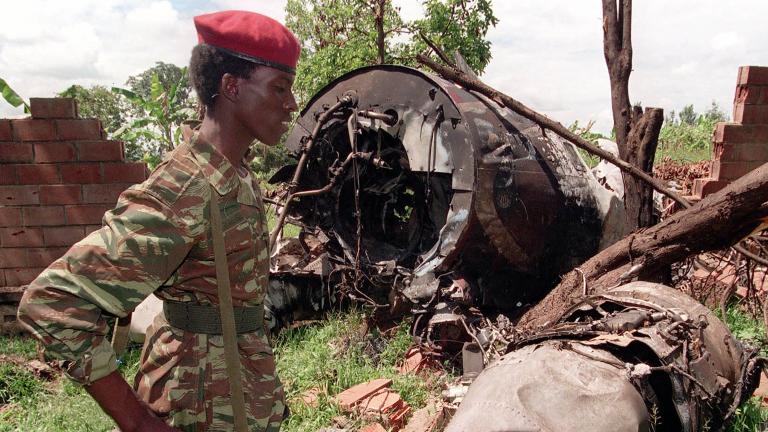
What people need to know about the genocide is that it is one of those crimes that you can see coming ... and when President Habyarimana's plane was shot down, knocked out of the sky over Kigali, we knew what would happen. We knew that was it for the Tutsis.
The 1994 genocide against the Tutsi in Rwanda
In the aftermath of the attack on President Habyarimana’s plane, extremist Hutus began a concerted attack against Tutsi in Rwanda. From April to July 1994, massacres were carried out by government forces as well as armed militia known as the Interahamwe. Participation in the genocide against the Tutsi was widespread. Neighbours turned on neighbours, friends turned on friends, and even family turned on family.
Members of Hutu militias went from house to house looking for Tutsi to kill. They set up roadblocks to stop people and force them to show their Rwandan identity cards. The militants used the cards to identify Tutsi in order to kill them. Tutsi women and girls were also raped by government soldiers and militia members on a mass scale.
In addition to members of the Tutsi minority, moderate Hutus who refused to participate in the genocide were also targeted, as were members of an indigenous group in Rwanda known as the Twa.
Genocide survivors Dada Gasirabo, Régine King and Philibert Muzima remember being on the run and hiding during the genocide, and the intense fear they felt.
Video: Dada Gasirabo – When the plane was shot down
Video: Régine King – Where to run?
Video: Philibert Muzima - The place of carnage
Confronting a genocide’s legacy
The genocide against the Tutsi in Rwanda finally ended in July 1994, when the RPF took control of the country. In just 100 days, an estimated 800,000 to one million people were killed. In the genocide’s aftermath, many steps have been taken to pursue recovery and reconciliation. However, the scale and severity of the genocide places many obstacles on such paths.

In Canada, members of the Rwandan Canadian community came together to offer solidarity and support for genocide survivors and their families and to commemorate the genocide. They also took steps to pursue justice against suspected perpetrators to ensure they can be held accountable for their actions.
Professor Régine King talks about what she envisions justice to mean in the aftermath of the genocide.
Video: Régine King – Justice is this big
PAGE-Rwanda … started while the genocide was still going on, because members of the Tutsi community who were living here in Quebec saw on a daily basis the horror portrayed in the media, and they knew that … we need to get organized in order to help each other out.
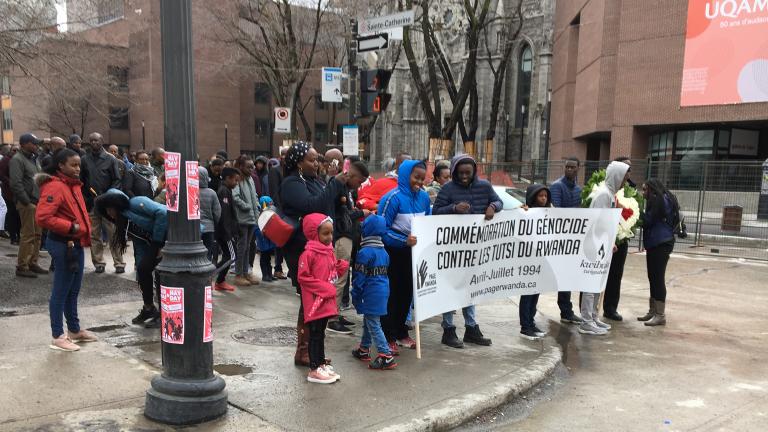
The genocide against the Tutsi was over in roughly 100 days. But the brutal violence committed against this minority ethnic and social group was preceded by decades of hatred incited against them. They were presented as inferior to Hutu and as dangerous to the nation of Rwanda. This process of dehumanization and presenting the Tutsi as a dangerous “other” set the stage for genocide. This process reminds us of the need to be vigilant against propaganda that seeks to single out certain groups for persecution, portraying them as less worthy of human rights than others.
When we begin to hear speeches that dehumanize or treat people like animals, vermin, cockroaches, less than nothing, the alarm bells should go off … We begin to classify, to pit people against each other, us against them. These are signals that do not lie, and I think that at any stage that leads us to genocide, we need to find preventive mechanisms. So it's important to react quickly and not wait until the bomb explodes.
Ask yourself:
Have I ever been made to feel inferior because of an aspect of my identity?
How do I ensure my voice is heard when I see an atrocity happening outside my country?
Why is it important to remember historical atrocities?
Explore more stories
Justice after genocide: Rwandan Canadian community activism
By Jeremy Maron
Explore how members of the Rwandan Canadian community mobilized to pursue justice, within Canada, for the 1994 genocide against the Tutsi in Rwanda.
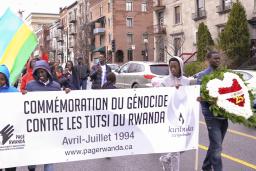
Us vs. Them: The process of othering
By Clint Curle
Explore the relationship between othering, human rights violations and the process of genocide through the lenses of the Holocaust and the Rohingya genocide.
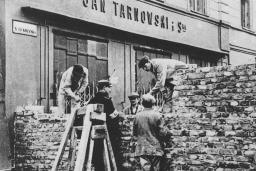
Suggested citation
Suggested citation : Jeremy Maron. “What led to the genocide against the Tutsi in Rwanda?.” Canadian Museum for Human Rights. Published June 26, 2019. https://humanrights.ca/story/what-led-genocide-against-tutsi-rwanda